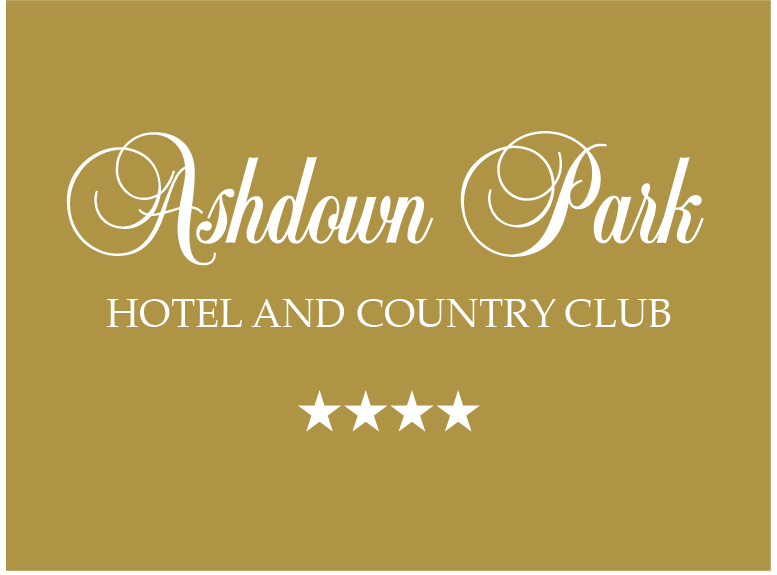Ashdown Park was once part of the large area of the Ashdown Forest enclosed under the decree of 1693, and over the following century passed through the hands of several land spectators.
The forest mansion house known here was built by either Thomas Bradford, who had Ashdown Park in 1815, or by Rear Admiral The Honourable Jacob Henniker who owned and occupied Ashdown Park from 1822. At the time the Estate comprised of 3,563 acres and included Pippingford Park, Old Lodge and the Army Training Ground.
In 1867 Mr Thomas Charles Thompson, Member of Parliament for Durham, bought the Estate. After purchase, he demolished the existing Henniker mansion, except possibly the cellars, and built the House which forms the central section of the building as it is now. The grounds were then laid out and some fine specimen trees planted. The stream, which originates near Wych Cross, was dammed to make fords.
In 1886 he added the little Church of St Richard de Wych to the east of the present estate so that the family, when at Ashdown, and locals could worship there and so save the three-mile walk to Hartfield. This small Church fell into disrepair and was demolished in the 1970s. Mr Thompson also built a School Room and School House for the local children and provided free lunches for them. This School closed in 1943 and is used today as staff accommodation.
Mr Thomas Charles Thompson died in 1892 leaving in his Will a black suit to each of his employees in order that they would be smartly dressed for his funeral. Ashdown Park was bequeathed to his daughter who had married the Vicar of Forest Row, George Carnack Fisher. The Fishers had lived in a house on the Estate, which is now the Roebuck Hotel at Wych Cross. Their son G. K. T. Fisher then inherited the Estate but was killed in 1917 in the First World War.
Captain Fisher had vacated the house by 1914 and for the duration of the War it was taken over by Lady Brassey who turned it, together with her own house at Chapelwood Manor; Chelwood Gate, into a Hospital and Convalescent Home for Belgian Army Officers.
In 1918 the Oxcroft Colliery Company purchased the Estate and felled most of the mature trees, which were used for pit props.
In June 1919 the Estate was once more put up for sale, and in July, Sister Marie Saints Anges of the Order of the Notre Dame visited Ashdown Park and considered it ideal for Convent purposes. Sister Marie had been born into the wealthy Towneley family of Burnley and baptised Mary Elizabeth. She entered the Order of the Sisters of Notre Dame of Namur in Belgium in 1872 and stayed in Namur until 1915 when she returned to England. In 1919 she was requested by the Mother General to find a property suitable for a training establishment for the novices and was able to purchase Ashdown Park for the Order quite cheaply as most of the trees had been felled. In the spring of 1920 the first Sisters of Notre Dame, together with 33 novices, arrived at Ashdown Park.
The House on its own was too small for Convent purposes, extensions to the building were planned and stone was quarried from the grounds. The money for this venture was forthcoming from the Towneley Estates (which were bequeathed to Sister Marie when her elder brother Richard died) and from the Honourable Mrs Edward Petre (formerly The Honourable Laura Stafford-Jerningham, the daughter of Lord Stafford) who on the early demise of her husband, joined the Order and gave her large fortune to furtherance of Catholic education.
In 1922 the West Wing was completed, the Church of Our Lady and St Richard (so called in honour of Richard Towneley) in 1924, and the East Wing in 1938. The Church, consecrated in 1927, was particularly beautiful with marble from Italy, Switzerland and Sweden. The Stations of the Cross were sculpted in Bruges. Harry Clarke of Dublin designed and manufactured the Sanctuary Windows where 35 shades of blue were used in addition to other colours. Geoffrey Webb, of East Grinstead, executed the stained glass windows in the Lady Chapel.
Read the story of one of the Nuns of Ashdown Park, Sister Gabriel.
The Nuns remained happily at Ashdown Park for almost fifty years until the United States International University took over in 1971. The Roman Catholic Church deconsecrated the Chapel and the USIC renamed it The Anita Oliver Lunn Chapel. Mrs Lunn was a benefactress of the University and patroness of many American educational, cultural and scientific organisations.
The University did not stay long and in 1974 Ashdown Park was conveyed to Barclays Bank for use as a Management Training Centre, which remained until being sold to its present owners on 1 February 1993.
The grounds now consist of approximately 186 acres which are divided into 95 acres of landscaped woodland, 40 acres of grazing land where wild deer roam freely, with the remainder kept on an amenity basis, all looked after by Estate Manager, Kevin Sweet and his team.
More you might be interested in:
SISTER MAGDALEN TALKS ABOUT OUR HARRY CLARKE STAINED GLASS WINDOWS


